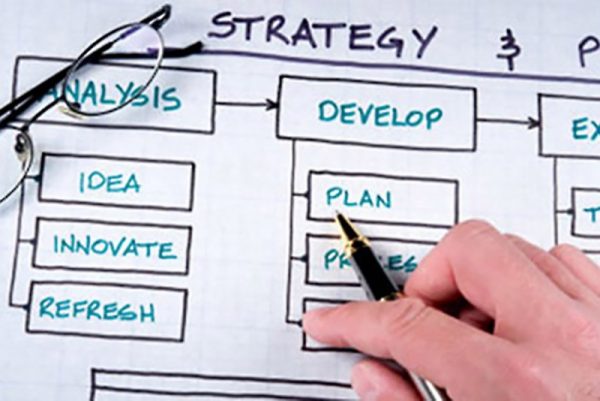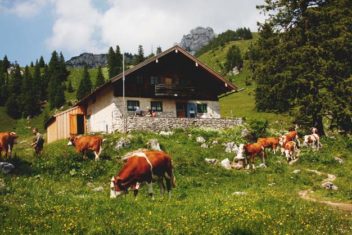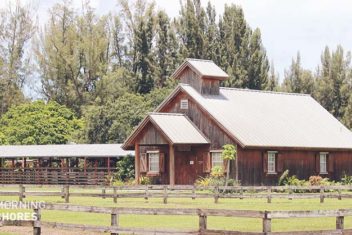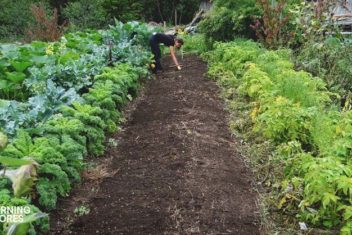Have you ever wondered how you could turn your homestead into a booming business?
Well, like many things, it all starts with a plan.
But how do you create a homestead business plan? What do you need to consider before you launch this idea?
Now, this is where I can help you. I will give you the outline to creating your very own business plan, but you’ll have to provide your own answers.
However, here is what you should consider and the parts of an actual homestead business plan.

Homestead Business Plan
Why Do I Need a Business Plan?
The first time I heard someone say, “write a business plan” I almost laughed out loud. The last time I wrote a business plan I got a 100% on it, but I was in college. I thought it was only for people who wanted to launch a fancy lucrative business that had to convince other people just how much money it could make them in order to get the funds together to launch their business dream.
Obviously, I didn’t see how my homestead fit into that category.
But I see now that a business plan isn’t just for getting investors on board. In fact, I’m not sure I would want other ‘official investors’ on board for my homestead. Unless of course, it was someone I shared the land and a similar dream with.
However, I see now that a business plan really forces you to sit down and think about as many aspects of a business as you possibly can. You are forced to put your ideas down on paper and thoroughly think them through.
Also, it helps you to look and see what your hurdles could be, how you can solve those problems before you ever get started, and also what your potential areas of strength can be.
So you see, a business plan isn’t just for someone wanting to start a brick and mortar business. It can also be useful for those of us that want to turn our land into a way to make a profit. It can also be used if you want to produce an item on your homestead and sell it through the internet.
Whatever your dream is, a business plan will certainly give you a great shot at achieving it because it makes you think your idea through.
Parts of a Business Plan
Again, I felt a little nostalgic writing this article. I went back to my college days when I was taking business courses. I remembered the dreams I had, the plans I had put to paper, and how well organized it all felt.
So I’m really happy to be able to share that same knowledge with you. Hopefully, this will help you to get your dreams on the track of becoming your new reality.
1. Executive Summary
The Executive Summary may sound really fancy, but really it is a simple start to your plan. It is where all of your basic information can be easily located and explored right up front.
So whether you are creating a business plan to get a family member or a friend on board, or even if you are creating a plan to see if your idea will even work, this is a great place to start. You’ll want to include your actual business name and the address of where your business will take place.
Then you’ll want to include what you are planning on selling. This could be a service (like utilizing your bees for pollinating other locations), or you could be offering tangible goods (like organic fruits and vegetables).
From there you’ll want to share your business mission or the vision for your business. This is where you really get to decide what your ‘why’ is for launching this profitable dream. If you are selling pollination, it could be because you want to see the number of bees increase and do your part to help vegetation carry on.
Or if you are selling organic fruits and vegetables, your purpose could be because you want to see people embrace a healthier, fresh lifestyle that will hopefully encourage people to know what they are ingesting in their bodies instead of taking big companies’ words for it.
Finally, you need to decide why you are making this business plan. Is it so you can get someone on board to help with launching the dream physically or financially?
Or is it just so you can organize your thoughts and really think an idea through? Not to mention, you’ll have a place to go back to when you feel your dream isn’t staying quite on the course you had planned. You can return to this plan and see where things went wrong and revise from the point you are at in the moment.
2. Homestead Description
This is a really important part of your homestead business planning process. This is where you decide how much liability you want to take on for your company.
So first you’ll need to decide if your homestead is going to be a sole proprietorship or an LLC. Sole proprietorship means that you have no legal work drawn up and that the business and you are one in the same.
But though it is easier to set up a sole proprietorship and the expense is less, realize that if someone wants to sue you for something, then your personal financial accounts, your home, and land are all on the table because there is nothing separating you from your business.
However, if you decide to visit an attorney and follow the necessary steps to become an LLC or a limited liability company things would be totally different. If your business accrues a debt or a liability that you simply cannot pay, the business or individual that you owe can go after whatever is in the company’s name, but what is in your name is off limits.
So you’ll need to think this through in the planning process.
Next, you’ll want to give a brief history of your business or dream of a business and also discuss what your business will do and supply for others. You touched on this a little in the Executive Summary, but you want to go into detail here.
Then you’ll want to discuss an overview of your product or service and also share what kind of customer base research shows you could have.
Then you’ll want to give a summary of the market you would be going into, an overview of the financial side of this market, and also the growth opportunities.
Finally, you’ll want to list your short and long-term goals for your business and how you plan to make this dream a profitable reality.
3. What You’ll Offer
Now we are moving onto what your homestead business could actually offer your customer base. You will want to begin this section of your business plan by giving a detailed account of what your product or service is and how it will benefit the customers you plan to sell it to.
Then you’ll want to do some research on your competitors. You will need to discuss in the section your role in the market and what advantages you have over your competition.
Next, you’ll want to discuss your product lifecycle. Products go through different stages where they will enter the market, grow, mature, and decline. You have to think about how your product or service is going to handle each stage of the process.
Then you’ll need to decide and do some research and development to figure out how you can create room for growth for your business even when one product has peaked. This is the difference between your homestead being a family business or a one-hit wonder.
4. Market Analysis
Knowing your market (even for homesteading) is so important. Though we choose to live the simple life, business is never simple. You are going to be competing with local grocery stores that are more convenient and often less expensive.
So you have to really know your market to be any sort of competition at all. This is where you dig in and understand what you are up against and how you are going to hold your own.
First, you need to know your customer demographics. Is your homestead going to have new, hip items (like microgreens) that a lot of young chefs opening local, popular restaurants would want to be a repeat customer for?
Or are you selling more traditional items that might be appealing to an older crowd? You need to know because how you market to different age groups will vary drastically. You will use this part of the step of business planning to do your research and write down who you are planning on selling to.
Then you’ll need to get actual statistics on the industry you are trying to get into and what the future looks like so you’ll know if your product or service has a positive outlook on the future. You will also want to get past, present, and future market data to include here. It will take some research, but the internet should have all the information you need for this part of the process.
Finally, you need to evaluate your competitors. This is where you will figure out who you are up against and what they do well and what they don’t do quite as well.
Then you’ll be able to take this information and apply it to your next step in the business planning process.
5. Your Strategy

via Entrepreneur
When you see people go into business, a good portion of whether they make it or not depends on the marketing. If people don’t know about you and what your company is all about, then how do you ever plan on making it?
So this is a very important part of your business plan.
First, you need to figure out how you are going to promote your business. Will you create social media accounts to spread the word? Will you create professional signage to place all around town? Will you hand out business cards or leave coupons or business cards at local businesses?
Or will you take out a newspaper ad? There are multiple ways to market your business. You just need to see what is the most realistic for your area and your budget.
Then you need to figure out the details on how much producing your product or service will actually cost you. You will need to know how much you are going to charge for your products and/or services. Can you think of any early promotions that might help draw people to your business? If so, then you’ll want to write those down.
Also, you’ll need to figure out the logistics of running a company. For instance, if you are using bees for pollination, then you need to know how you can efficiently move the bees around from place to place in a way that won’t double book the hives. That all takes planning and lots of coordination.
Finally, you’ll need to decide if you will be hiring anyone to help you run this business. Also, where will people go to speak with you about your products or services and what will your hours of operations be? You will want to iron out all of the details prior to jumping in with both feet.
6. The Organization Plan
You might want to consider skipping this part if you are planning on going into business by yourself.
However, if you are going into business with a friend or family member, then you’ll want to consider giving a brief profile of the owners. This will share how much of the company each person owns, how much involvement they’ll have in the day to day business, and also listing what their skills or background knowledge are.
Also, if there is anyone else involved like an accountant or attorney, you’ll want to list that in this section as well. It is a great way to keep records of who you have contacted in the beginning stages of your business.
7. Finances
Finally, we get to the finances. When you are running a business, money matters. This is the part of the plan where you will set realistic financial goals for your company. You will need to take all of the research you’ve done in previous sections and figure out how much money you hope to make in the first year, the first 5 years, and where you see your business financially in about 10 years?
Then you’ll document your goals, the plan for getting to those goals, and your line of thinking when establishing those goals.
So you now know how to create your own homesteading business plan. This will look different for everyone because we all have different goals when it comes to turning our homestead into a business.
But it is a great way to think our plans through.
So tell me, have you created a business from your homestead? If so, how did you do it? Did you utilize a business plan? Was it helpful?
We love hearing from you, so please leave us your thoughts in the comment section below.















